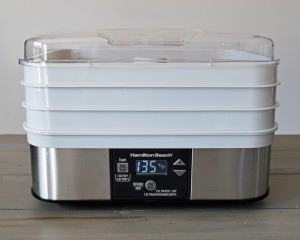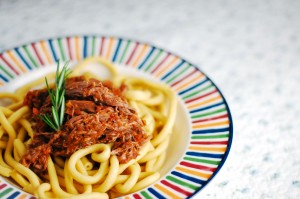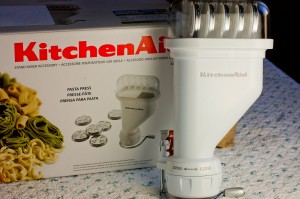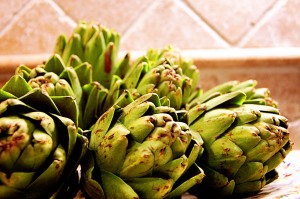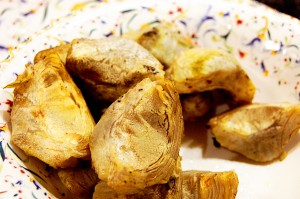Homemade Beef Jerky & Hamilton Beach® Food Dehydrator Review
Not all counter-top appliances were created equal. When I first started cooking I was all about getting a hold of the latest gadgets and gizmos for my kitchen. The flip-able pancake pan? Check! The active-fry minimum oil fryer? Sign me up! A combination sandwich maker, coffee brewer, and pizza oven? Yes! Yes! Yes!
What I soon learned was that more kitchen appliances is not the merrier. The pancake maker never made great pancakes. When you flip the pan over, the side that had been face up is stone cold and is no position to been cooking your pancake. The minimum-oil french fry maker takes up half the counter space in the kitchen, takes an hour to make french fries, and they taste like, well, french fries that took an hour and weren’t made with any oil. So, yes, as a consumer I often get excited by the late night tv ads showing “must have” products du jour. But sometimes all you need to cook pancakes is a frying pan; and sometimes you need to fry your damn french fries in oil or don’t have french fries to begin with.
All of this is to tell you, I don’t like collecting kitchen appliances for the sake of having them. I’ve learned my lesson over the years. So many appliances collect dust in my basement until I finally give them away. So, when I tell you I can’t live without my food dehydrator – I’m speaking from a place of self-awareness. I’ve fallen for many a pretty juice maker and set of Ginsu knives.
Beef jerky is simply one of the greatest snacks ever invented. It’s beef. It’s delicious. It doesn’t need refrigerating. My kids LOVE it. And did I mention it’s beef? Beef you can travel with in your pockets.
Making beef jerky at home without a dehydrator is not impossible. I’ve made the recipe below in the past without one. You can turn your oven really low and use that but the temperature isn’t quite low enough and the beef cooks as much as it dries out. For me this sometimes results in moldy beef jerky a week after it’s made. An expensive investment with the current price of beef. I’ve also made jerky by rigging up a box fan and laundry basket, drying the beef out in my own mini wind tunnel. But it takes some work, and my wife curses me out every time she goes to fold socks and the laundry basket smells like a butcher’s shop…

The beauty of a food dehydrator is that it’s multi-layered (meaning you can do a lot of beef at one time), and it does one thing and does it damn well. It slowly dries your beef in a safe environment and ensures perfect results every time. That leaves you time to dream up ways of hiding the delicious results from your kids. My Hamilton Beach Food Dehydrator has five stackable layers with continuous airflow and an adjustable thermometer. So there is no need to rotate the beef or babysit it. I set it and come back four hours later to see how things are progressing.
Ingredients:
4 pounds lean brisket – have your butcher thinly slice the meat with the grain, into long strips. Meat slices should be no more than 1/4 inch thick.
1 1/3 cup Worcestershire sauce
1 1/3 cup soy sauce
2 tablespoon honey
4 teaspoons freshly ground black pepper
4 teaspoons onion powder
2 teaspoon red pepper flakes
Preparation:
- Place the strips of meat along with all of the remaining ingredients into a large zip-lock bag and mix to incorporate all of the ingredients. Place the bag in the refrigerator for 6 hours.
- Remove the meat from the marinade and pat dry with paper towel.
- Place beef slices in a single layer on the first tray, leaving space around each slice for proper drying. Fill trays with remaining beef slices.
- Stack trays on base with the top tray last. Set the dehydrator to 160°F for 4 to 8 hours. Start checking beef for doneness at 4 hours and then every 30 minutes. Jerky is dry when you can bend it and and the top cracks, but the slice does not break.
- Pat jerky dry with a paper towel to remove any surface fats and cool completely before storing in an airtight container.
- If jerky has been properly dried, cooled, and packaged, it may be stored up to 2 months in an airtight container at room temperature.
Photo credit: stalkerville.net
Filed under: Recipe on October 21st, 2015 | Comments Off on Homemade Beef Jerky & Hamilton Beach® Food Dehydrator Review
